How to Identify and Correct a CalMag Deficiency
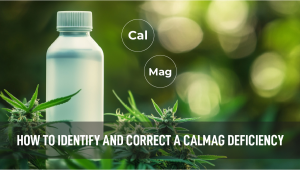
- 1. The importance of calcium in cannabis growing
- 2. The importance of magnesium in cannabis growing
- 3. Why do cal/mag deficiencies appear?
- 4. Confusion with other symptoms
- 5. Early, mid, and late symptoms of cal-mag deficiency
- 6. Symptoms of magnesium and calcium deficiencies
- 7. Solution for calcium and magnesium deficiencies
- 8. How to prevent cal-mag deficiency
- 9. How long does it take for cannabis to recover from a calmag deficiency?
- 10. Can you overfeed calmag?
- 11. When to stop feeding cal-mag?
CalMag (Calcium and Magnesium) are essential nutrients for healthy cannabis plant growth and bud development. Calcium fortifies cell walls, aiding in nutrient transportation, while magnesium is crucial for photosynthesis, the process by which plants capture sunlight and convert it into energy.
Without calcium and magnesium, your plants will grow with weak stems, curled leaves, and likely yellowing leaves. Generally speaking, these issues happen due to low pH levels at the roots or growing with soft/filtered water; however, there are other causes. If you want to grow the tastiest, most potent buds, make sure to read along to learn how to identify and correct Cal/Mag deficiencies before they ruin your harvest!
The Importance of Calcium in Cannabis Growing
When talking about cannabis, there are macronutrients (NPK) and micronutrients. Macronutrients are used in larger amounts than micronutrients. Calcium and magnesium are micronutrients; however, they are extremely important. Deficiencies of either magnesium or calcium will result in unhealthy plants with stunted growth, weak stems, and smaller yields. Additionally, a calcium deficiency can make cannabis plants more susceptible to damage from bugs and diseases.
The Importance of Magnesium in Cannabis Growing
Magnesium is just as important as calcium since it is essential for photosynthesis. Magnesium is the main element in chlorophyll, which enables plants to absorb light and convert it into energy. It is crucial for nutrient absorption, protein and carbohydrate synthesis, and CO2 utilization. Without calcium or magnesium, your plants will not develop to their full potential.
Why Do Cal/Mag Deficiencies Appear?
Magnesium and calcium deficiencies are usually caused by a pH imbalance, which inhibits the transportation of these nutrients. This typically occurs if your substrate is too rich in phosphorus, when using RO water, or when the substrate is too coarse and sandy.
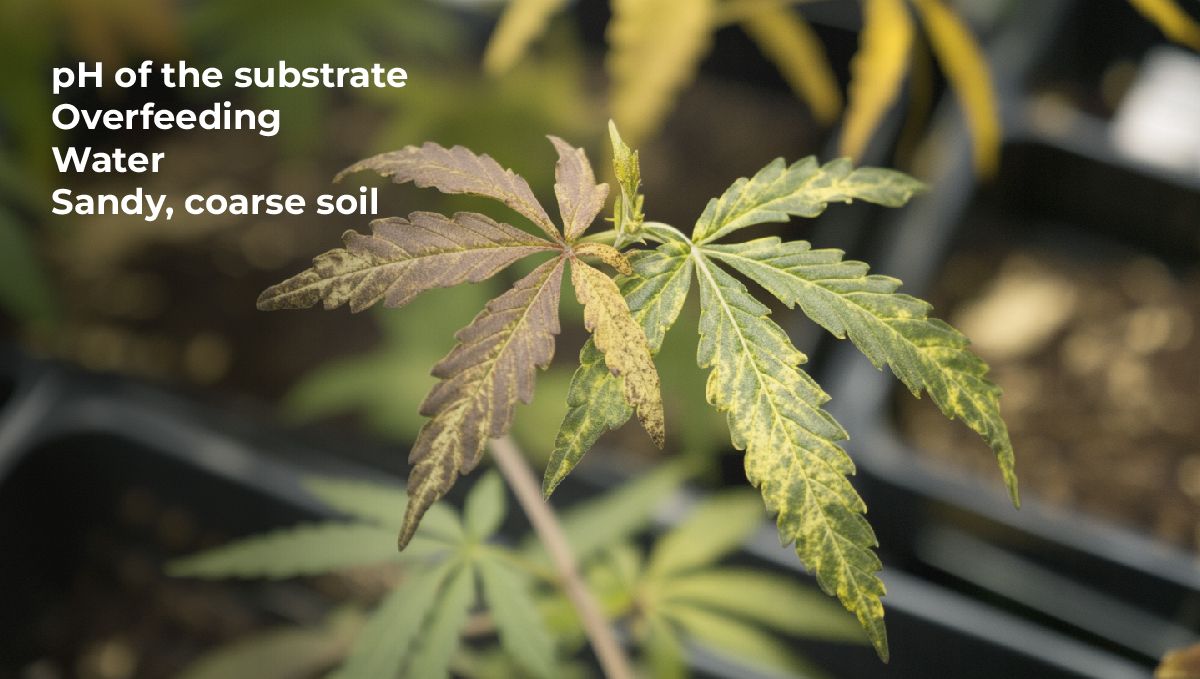
In addition, there are other main factors to consider if you want to avoid Cal-Mag issues:
- pH of the substrate: If your substrate has an incorrect pH, Cal-Mag deficiencies are very common. Cannabis plants absorb nutrients more efficiently in a pH range of 5.5-6.5 in hydro/coco and 6-7 in soil.
- Overfeeding: An excess of nutrients can affect calcium and magnesium uptake. Follow the manufacturer’s feeding chart to provide a balanced mix of macro and micronutrients.
- Water: Tap water contains magnesium and calcium; however, RO water or distilled water do not. If you are using filtered water, make sure to add a Cal/Mag supplement.
- Sandy, coarse soil: Some types of substrates can drain and dry very quickly as they do not hold enough nutrients. Experiment with peat, soil, perlite, and vermiculite to find the perfect substrate mix.
Confusion With Other Symptoms
Diagnosing a CalMag issue can be challenging since the symptoms can be confused with a nitrogen deficiency and other issues. To accurately diagnose a Cal/Mag deficiency, consider the following:
- Location of symptoms: A Cal-Mag deficiency typically affects new growth, whereas a nitrogen deficiency impacts older growth (lower down at the base of the plant).
- Patterns: Observe the yellowing (chlorosis) patterns. A nitrogen deficiency causes the whole leaf to yellow, whereas a Cal/Mag deficiency results in interveinal yellowing.
- Leaf curling: While other nutrient deficiencies can also cause leaf curling, a Cal/Mag deficiency will have more defined browning tips.
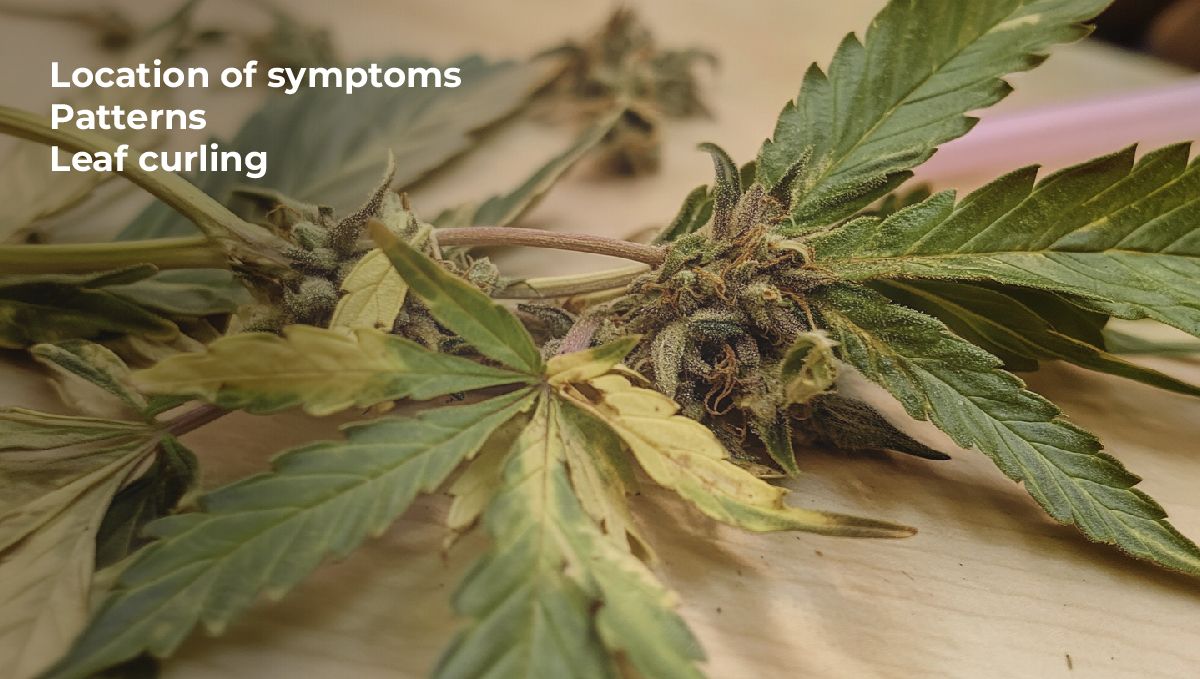
These examples illustrate the importance of confirming a Cal-Mag deficiency before starting treatment. Misdiagnosis and incorrect treatment can worsen the issues.
Early, mid, and late symptoms of Cal-Mag Deficiency
Once you confirm it’s a Cal-Mag deficiency, assess the extent of the deficiency in the plant. This will allow you to treat it more effectively and, hopefully, definitively. Remember, a Cal-Mag deficiency can cause issues from the roots to the flowers.
| Symptoms | What to look out for | |
| Early | Can be spotted in new growth, yellowing between the veins of the leaves, small brown spots and curling | |
| Mid | Weak stems, yellowing getting worse faster, browning of tips of leaves | |
| Late | Poor bud development, leaves fall naturally, possibly rotting | |
Symptoms of Magnesium and Calcium Deficiencies
So finally, what are all the symptoms of a Cal-Mag deficiency? Although it’s hard to diagnose a Cal/Mag deficiency, here are the main indicators of a calcium deficiency:
- Plants fail to reach normal height.
- Edges of the leaves dry out.
- Slow root growth.
- Rust-colored spots on leaves.
- Stems and stalks are weak and brittle, easily breaking.
Signs of a magnesium deficiency might be similar to those of a calcium deficiency but aren’t always identical. They are:
- New growth is weak.
- Parts of the leaves die off.
- Necrotic spots.
- Leaves die entirely and fall off.
Solution for Calcium and Magnesium Deficiencies
As mentioned, your plants may show symptoms of a Cal/Mag deficiency if the pH is too low (which is the most common reason). Therefore, the first step is to ensure you have the correct pH at the root zone.
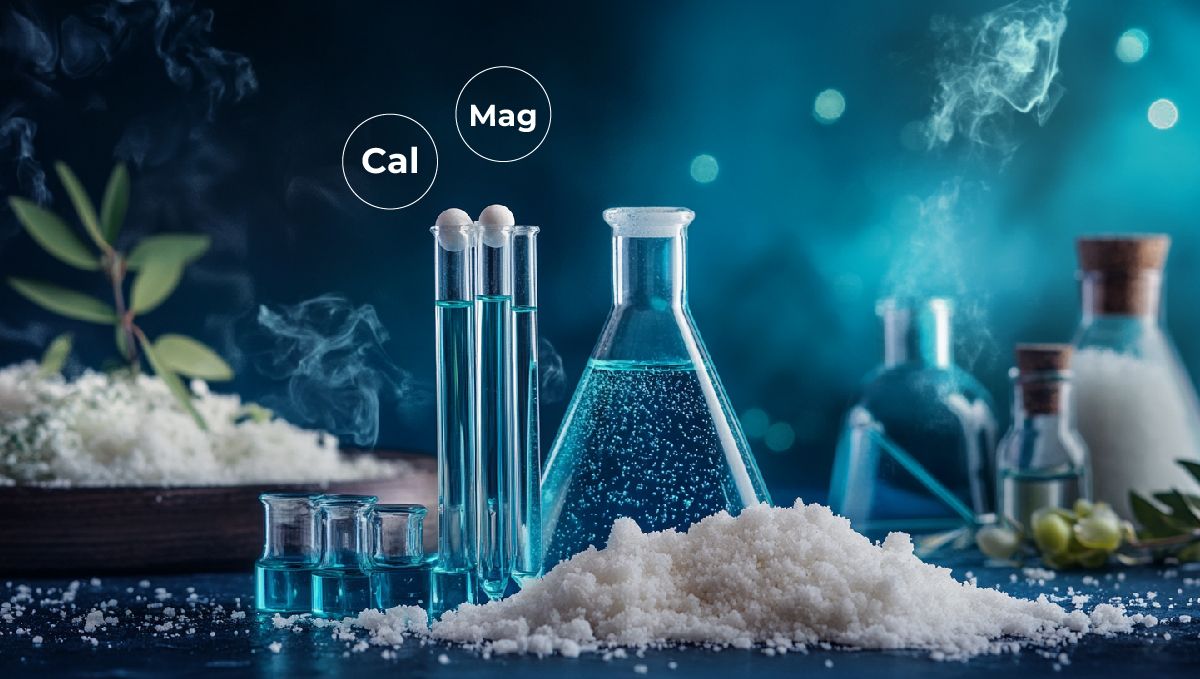
Remember that in soil, it’s recommended to keep the pH between 6.3 and 7.0 (calcium tends to be absorbed better above 6.2). In coco or hydro, keeping the pH between 5.5 and 6.3 is recommended. To achieve this, flush your plants with plain pH’d water and a CalMag supplement. Remember that the already damaged leaves will not recover, but the symptoms should stop appearing after one week.
CalMag Supplement
A CalMag supplement can help prevent this type of deficiency. However, too much calcium can lock out other nutrients, so make sure to give a preventive dose. You can use any Cal/Mag supplement, and preferably, buy two separate supplements (one calcium and one magnesium) so that you can address the issue more effectively.
Dolomite Lime (for organic growers)
If you grow in living soil or use organic nutrients, Dolomite Lime can help prevent this type of issue. Dolomite Lime is a good source of magnesium and calcium can be mixed with your soil. Since it has a pH of 7.0, it will help keep the soil at the correct range that is optimal for cannabis. Dolomite is fairly cheap and not exclusive to cannabis, meaning you can easily find it at a home improvement or gardening store.
How to Prevent Cal-Mag Deficiency
There are a couple of simple things you can do to prevent a magnesium or calcium deficiency further into the flowering stage. Do the following:
Check and Adjust pH
Make sure the pH of the nutrient solution and substrate is ideal. In hydro/coco the pH should be kept between 5.5 to 6.3 and in soil between 6.5 to 7.0.
Use Balanced Nutrients
Use balanced nutrient lines that are not too heavy on phosphorus since too much phosphorus can lock out calcium.
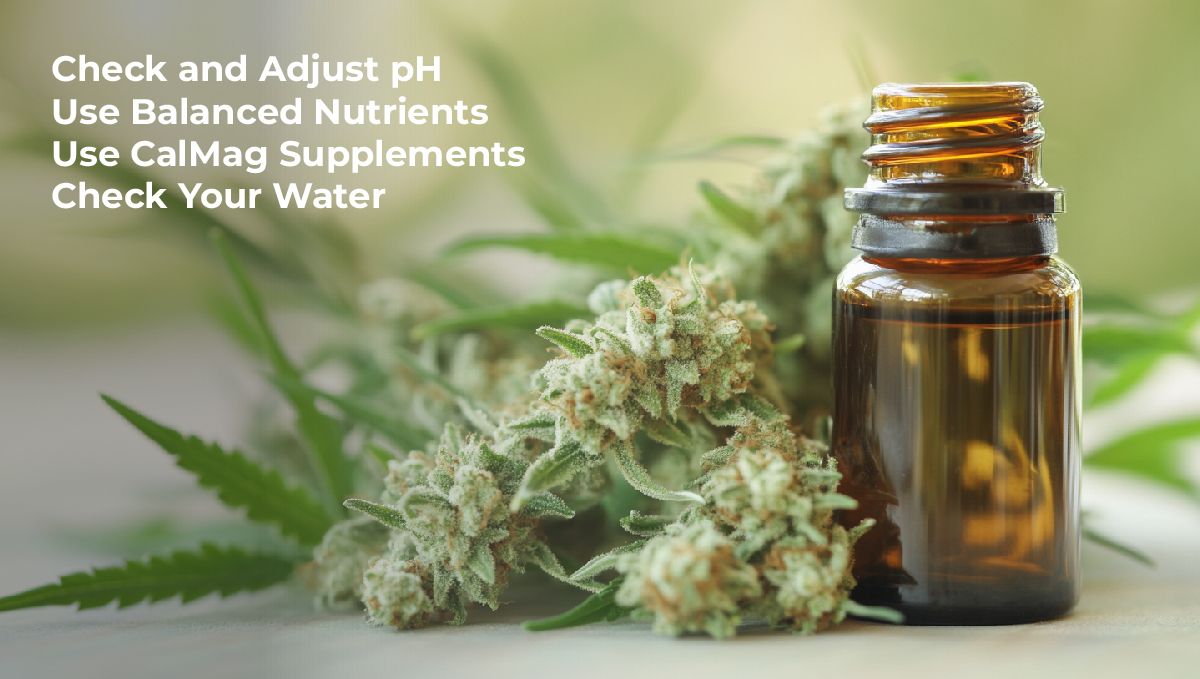
Use CalMag Supplements
Include a CalMag supplement in your feeding schedule to prevent a CalMag deficiency.
Check Your Water
If the above methods do not work, check your water. If you are using filtered, RO, or soft water, consider supplementing it with micronutrients or switching to a different source
How long does it take for cannabis to recover from a CalMag deficiency?
The recovery time depends on the overall health of the plant and the severity of the deficiency. Typically, you should start to see improvements within 1 to 2 weeks after beginning treatment. However, be aware that old growth will remain damaged.
Can you overfeed CalMag?
Yes, it’s important to treat a CalMag deficiency, but it’s equally important to avoid feeding too much CalMag, as it can lead to cannabis nutrient lockout.
When to stop feeding Cal-Mag?
You can use it as a preventive measure from the seedling stage up to two weeks before harvest. Stop feeding Cal-Mag 2 to 3 weeks before harvest to ensure the flowers are 100% clean.
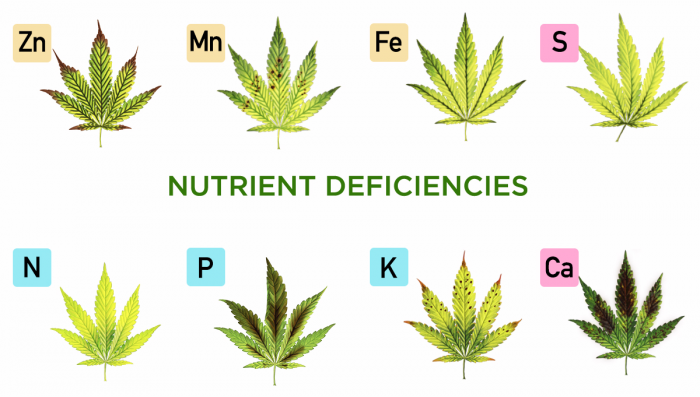







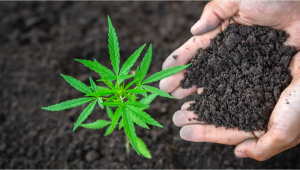
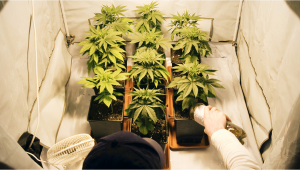


Comments